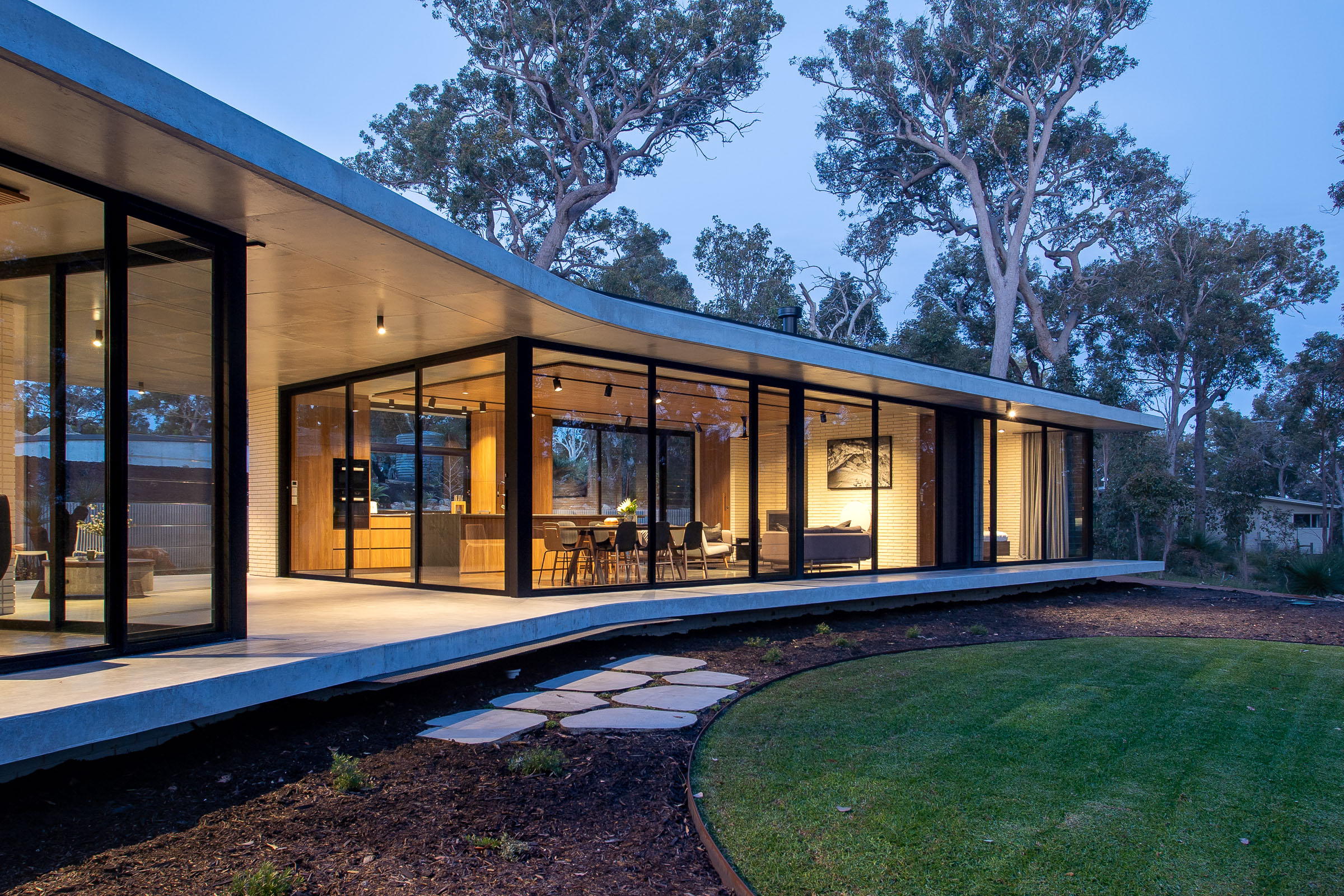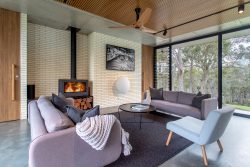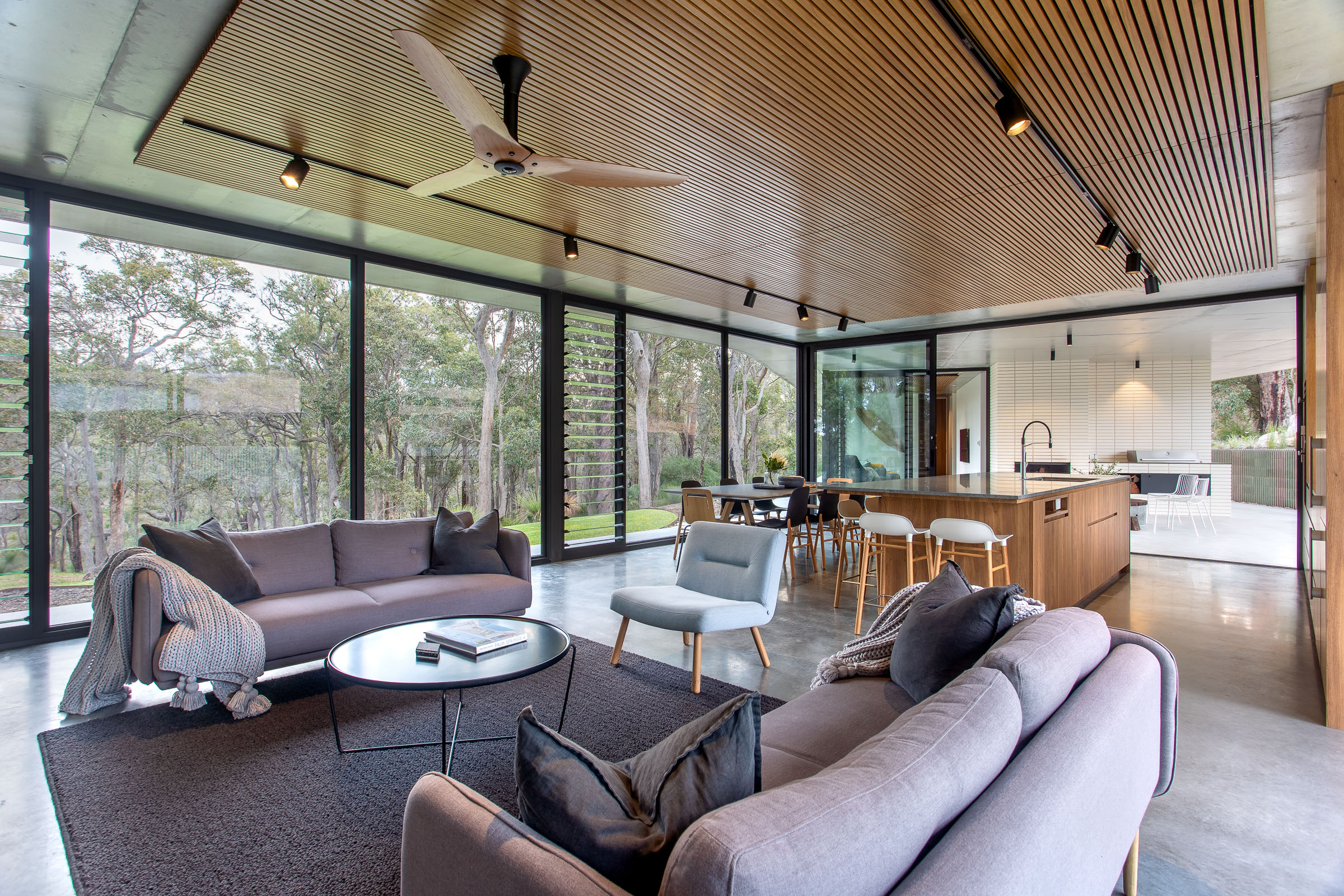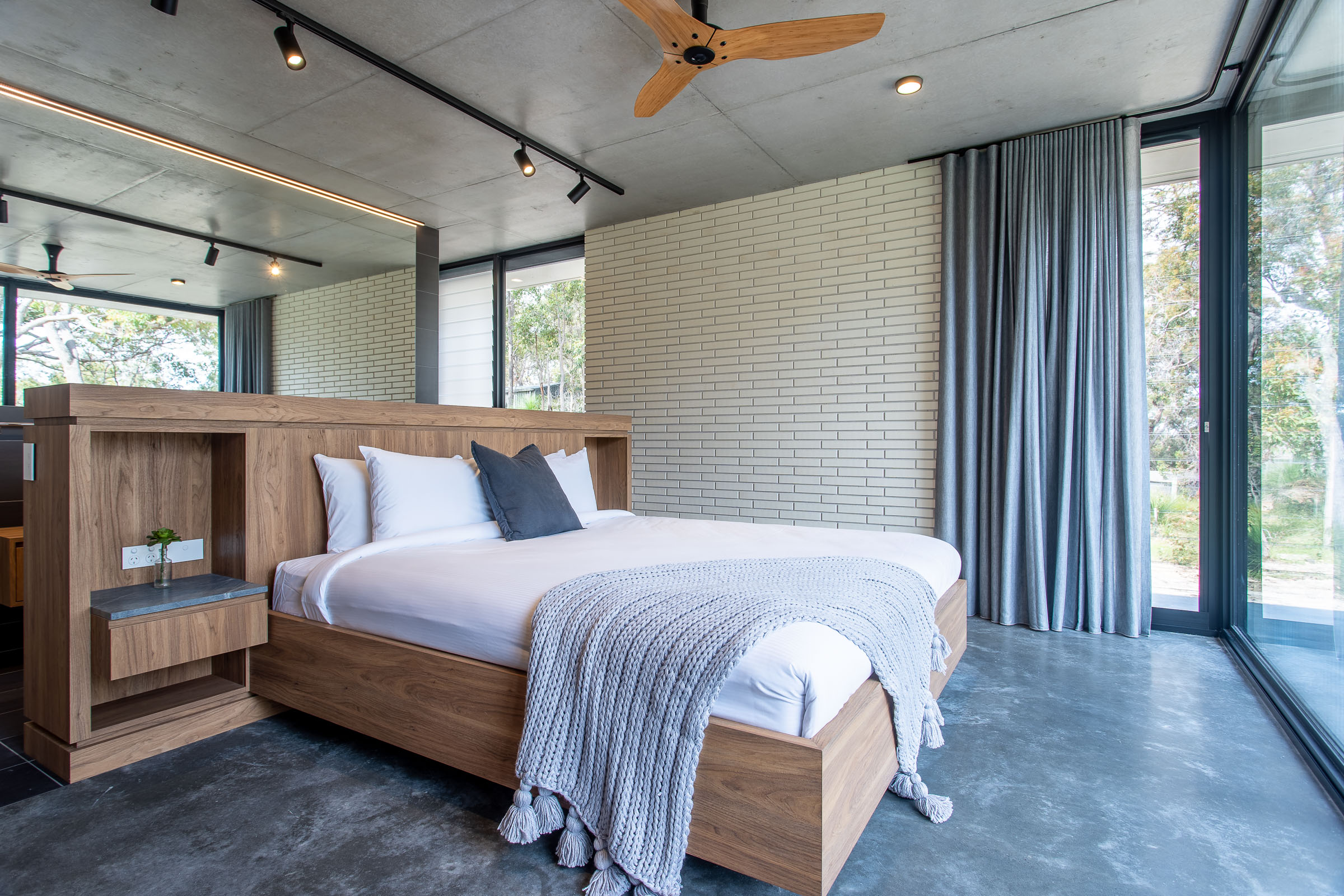Friday, June 21, 2024
Behind the front door of Boomerang House

In today’s Behind The Front Door blog, we chat to Boomerang House architect Tim Wright, and owners Nadia and Paul, about their pavilion-style abode and its unique, nature-encompassing design.
Boomerang House effortlessly merges indoor and outdoor living through a pavilion-style design, solar passive construction and a complementing material palette of concrete, glass and wood.
The home, perched above old karri and marri trees, sits back from the streetscape; a near-hidden haven that encourages visitors to embrace a slower pace.
“One of our favourite things about Boomerang House is its view down into the valley and through the trees,” owner Paul says. “You can sit anywhere on the north side of the house and see right through, down into the bush on the south.”
“The breezeway, the living room, the main bedroom, the additional bedrooms… even the courtyard – you get the same kind of outlook no matter which space you’re in.”
The clever, boomerang-shaped design, comprising two wings connected via an undercover breezeway, can be attributed to renowned Perth architect Tim Wright.
“We’ve stayed in really big places that weren’t particularly well designed – a lot of wasted space and not a lot of thought put into it,” Paul says. “We really like good design, so in the end we bit the bullet and decided we were going to get someone to design something for us.”
“We quite like Tim’s work and a lot of his houses are quite transparent; you can sort of see through from one side to the other,” he says. “We really liked that kind of aspect.”
When Tim saw the topography of Boomerang’s bush block, he was drawn to the same view that first enamoured Paul and Nadia.
“I always saw a really long, floating glass pavilion that would capture the aspect of the trees down to the creek,” Tim says. “The actual [boomerang] shape hugs the view, while also hiding the carport and other houses from the living areas.”
“When you’re facing south, you feel like you’re the only house there,” Nadia says.
This beautifully isolated feeling is enhanced by a simple-yet-effective, raw, natural and low-maintenance material palette.
“The entire roof is concrete, and so is the floor,” Tim says. “The use of concrete reinforces that sense of strength exuded from the trees that surround the home.”
Tim says the roof and floor are visually connected, but acoustically separated, thanks to the installation of an acoustic ceiling.
“When the doors are shut, even when it’s really pelting with rain, you can’t hear a thing.”
And because the house is only one room-wide, cross-ventilation is utilised and the use of air conditioning minimised. Underfloor heating emits the most beautiful, radiant heat, while the addition of a woodfire to the main living area heightens the home’s cosiness in winter.
Between concrete you’ll find large glass panels on the southern side of the home, with stunning 80s-style bricks detailing the northern side’s façade.
“I guess we were inspired by mid-century modern Palm Springs,” Nadia says. “We like minimal design.”
“Our current house was built in 1929,” Paul says. “It’s Federation-style, but with a fairly minimal, modern extension. Boomerang is a very different house.”
Different, in all the right ways.
This blog post is part of our Behind the Front Door series, which give you an insight into the design and build of some of our favourite Private Properties holiday homes. Meet the owners of these stunning properties, and find out why they fell in love with their little slices of paradise and the breathtaking destinations they’re located in.
Sign up for our newsletter to stay updated on all things Private Properties.











